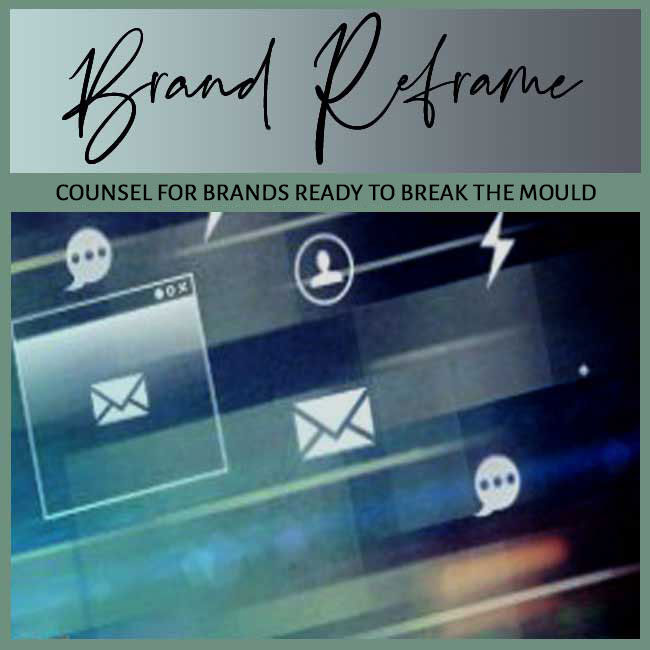
FOCUS: BRAND CLARITY ISSUES | AUDIENCE: EXPERTS WITH IGNORED BRANDS
BY: SHOBHA PONNAPPA | BRAND BREAKTHROUGH STRATEGIST | 45 YEARS | 125+ CLIENTS
I answer 6 tough questions about why brand language often feels clear to founders but confusing to the market … and how to re-word.
I often see experts who believe their brand messaging is sharp and obvious, only to discover that prospects interpret it differently. Internally, the team nods in agreement because they share the same context. But customers outside the company misread or misinterpret the words. The result is a widening gap between intention and perception.
The reason is that founders live inside their own expertise. Jargon feels natural when you are immersed in your field, but to the market, it can feel alien. What seems simple to an insider often sounds complicated or irrelevant to outsiders. The clarity founders assume rarely matches the clarity customers require.
Another reason is the curse of knowledge. Founders compress years of expertise into shorthand phrases that customers cannot decode. This shorthand gives the illusion of clarity but excludes those unfamiliar with the background. Without translation into customer language, the message misses its mark.
A key warning sign is when prospects repeatedly ask what you actually do. If sales conversations begin with confusion instead of curiosity, the language is not landing. Another sign is when website analytics show high traffic but low conversions. People arrive, but they leave unconvinced or puzzled.
Another indicator is when press coverage or customer word-of-mouth describes your brand inaccurately. If the market repeats a version of your story that doesn’t match your intent, clarity is missing. The market always signals when language fails … if you listen carefully.
Unclear brand language creates friction at every customer touchpoint. Prospects hesitate, teams spend extra time explaining, and competitors with simpler messaging steal attention. Confused buyers rarely convert. Clarity is not optional … it is the foundation of growth.
Over time, unclear messaging slows referrals and partnerships. If partners cannot explain your value clearly, they stop recommending you. The lack of clarity multiplies into stalled opportunities. Growth plateaus when words block understanding.
The simplest test is to ask customers to describe your brand back to you. If their words match your intent, the language is working. If not, the gap is obvious. Founders must be willing to validate messaging externally instead of assuming clarity internally.
Practical methods include message testing through surveys, A/B testing on landing pages, and running small focus groups. These tools show how language performs in the real world. The goal is not cleverness but resonance. Clarity is proven by adoption, not assumption.
Advisors can act as mirrors that reveal blind spots. Because they stand outside the founder’s expertise bubble, they notice jargon and ambiguity. By questioning word choice, they highlight where clarity breaks down. Their perspective forces simplification without diluting substance.
Peers from adjacent industries can also stress-test the message. If they understand it quickly, chances are customers will too. Advisors and peers accelerate clarity by challenging assumptions. Their feedback closes the gap between internal conviction and external comprehension.
If ignored, unclear language turns expertise into invisibility. Markets overlook you not because you lack value but because they cannot grasp it. Investors hesitate to back brands they cannot articulate. Customers walk away to competitors who speak more plainly.
The longer the gap persists, the harder it becomes to shift perception. Words once set in market memory are difficult to overwrite. Ignoring clarity issues locks brands into invisibility. That is why language must be treated as a strategic asset, not an afterthought.
If these questions resonate, your brand may be strong in expertise but weak in expression. The risk lies in confusing knowledge with clarity. The solution is deliberate translation into words customers recognise instantly. With clear, resonant language, ignored brands begin to get noticed.
If you’re brand owner or manager seeking stronger brand performance, this FAQ Insight Post I wrote could interest you: “FAQs: When Your PR Wins Headlines but Fails to Shift Perception.“
If you’re an investor seeking momentum for your portfolio brands, this FAQ Insight Post I worked on may resonate: “FAQs: When Founders Build for Peers Instead of Paying Customers.“

"One BIG IDEA can turn brand stagnation into unstoppable movement. Spots are limited each week ... book your breakthrough session now."
Shobha Ponnappa
More Breakthrough Ideas … Case Studies & FAQs … from the Brand Clarity Issues Category
Case Studies
FAQ Insights
Smart insights, real-world frameworks, and idea-driven clarity – designed to help brands move.
Get my fortnightly Brand Reframe newsletter. Smart insights, distilled thinking, and focused momentum to help your brand lead.

Get my free AI strategy guide. Smart prompts, sharper briefs, and practical ways to make AI support your brand momentum.

Just fill in the form to join. Get my newsletter and the guide shown alongside, all with several game-changing tips.